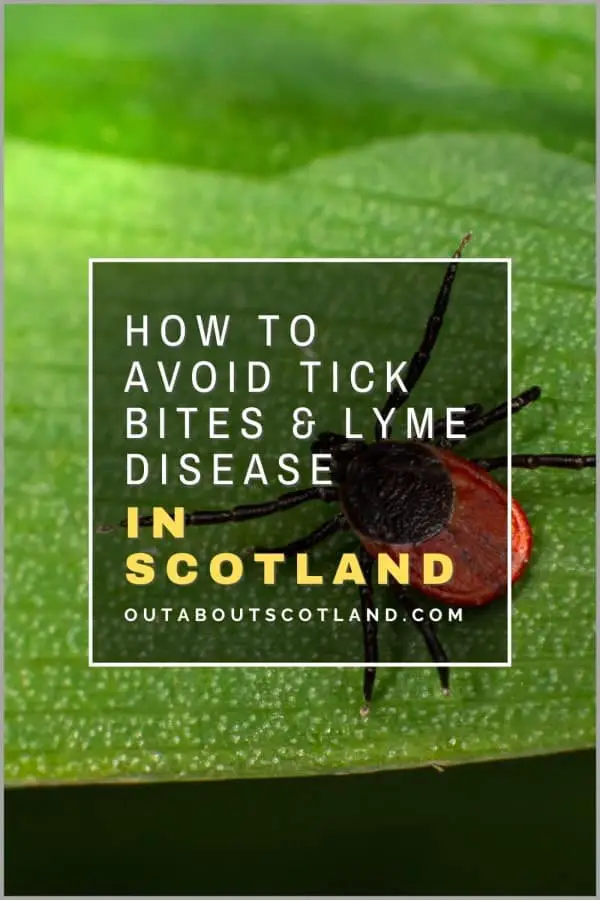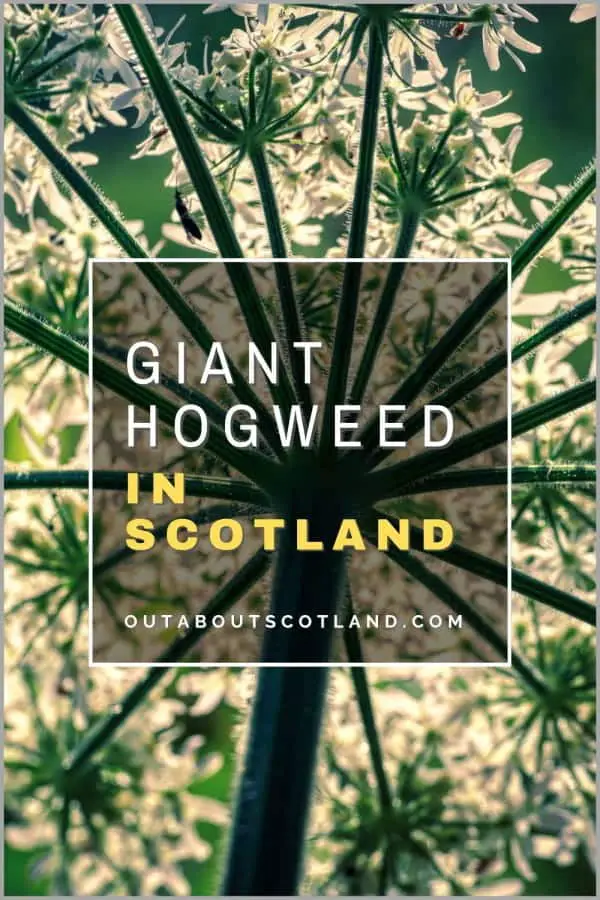Midges are small, biting insects that live in vast swarms in the Scottish Highlands and can bring misery to unwary travellers. There are a number of recommended repellents, including Smidge and Avon Skin So Soft. However, if you do get bitten, you should head to the NHS insect bites and stings page which details several treatments, including applying over-the-counter antihistamine cream.
Discover exactly what midges are, where they live, and how you can avoid them in this complete guide to the Scottish midge.
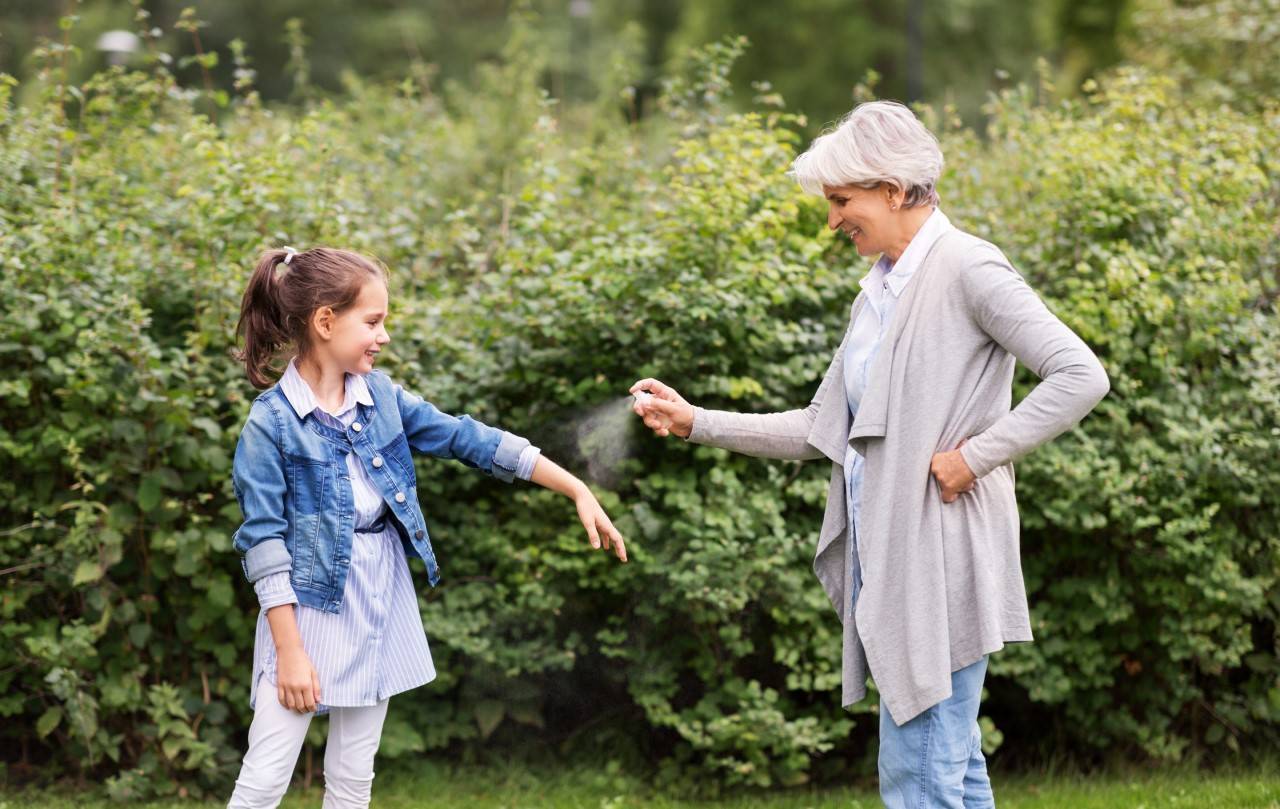
What Are Scottish Midges?
If you’re reading this in the US and you’re wondering what a midge is you’ll no doubt know them as ‘no-see-ums’ (congratulations by the way on having a much better name for them than we do. No-see-ums. A perfect description!).
These insects are part of the Ceratopogonidae family of biting midges and they exist on every continent on earth except for those places that are either too cold (like the north and south poles) or too hot (like the permanent deserts of North Africa).
Size-wise, they’re tiny – hence the no-see-um name – and are generally only 1 to 3 mm in length, but don’t let their size fool you because they pack one heck of a punch with their bite. It’s actually only the females that do the biting, and they’re happy to munch on any vertebrate, whether it’s cows, sheep, deer, or you and me.
While the males of the species prefer to chow down on dead plant matter, females need protein to prepare for their egg-laying – which they do in vast amounts. We have 37 species of midge here in Scotland, but the most prevalent is C. impunctatus, which loves laying its eggs in wet soil, something we’re not exactly short of in this country.
While it’s obviously impossible to accurately gauge their numbers several studies have estimated that for every 2 square metres of ground there will be half a million eggs, so across the known areas where Scotland’s midges have been found, there could be up to 181 TRILLION of them!
You’ll get a good idea of the size of these swarms if you go romping about the countryside at dawn and dusk when they’re most active, especially if you don’t protect yourself. To be honest, it’s difficult to describe just how bad they are if you’ve never had a summer in Scotland, but let me warn you they tend to get everywhere. In your ears, in your hair, down the back of your shirt, just everywhere.
They are, as I mentioned at the beginning of this article, a real Highland menace.
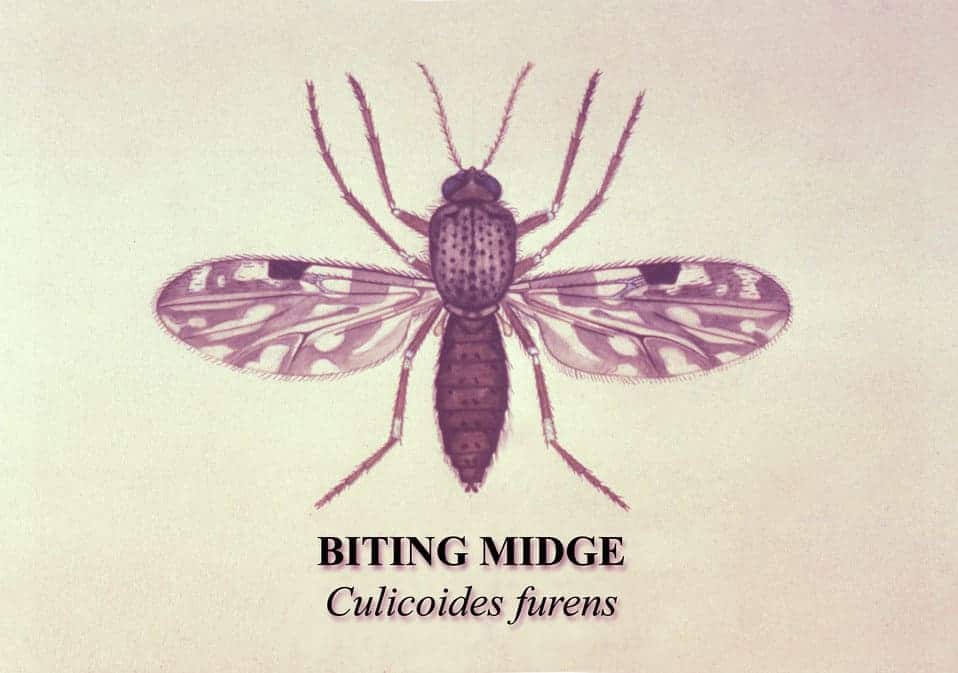
Protect Your Family From Scotland's Biting Midges
- Powerful, reliable protection for up to 8 hours
- Water- and sweat resistant
- Repels midges, mosquitoes, horse flies, sand flies, fleas and ticks
- Safe for use on adults, children over 30 months and pregnant women
- Non-sticky, moisturising with a pleasant fragrance
- Packaging may vary
Where do midges live in Scotland?
The greatest numbers of midges are to be found in the West Highlands as that’s where you’ll find their favourite habitats. Thanks to the dense low-lying plants that thrive in Scotland’s remotest regions, the ground underfoot is mostly damp and boggy which is the perfect condition for the females to lay their eggs.
You’ll also find them on the north coast and all along the west coast, but because the wind tends to be stronger on the coastline there’s a good chance you won’t be affected by them too much there.
To summarise, the worst place for midges in Scotland is anywhere close to their breeding grounds (usually boggy moorland) and anywhere close to their favourite food sources of sheep, cattle, and deer (most of the Highlands and Western Isles).
Don’t think you’ll get respite if you head into Scotland’s forests either, because the mulchy forest floor makes another good breeding ground. That being said, you will be able to escape them once you leave the great outdoors and enter the towns and cities, and pretty much anywhere in the far south and east of Scotland will be almost completely free of them.
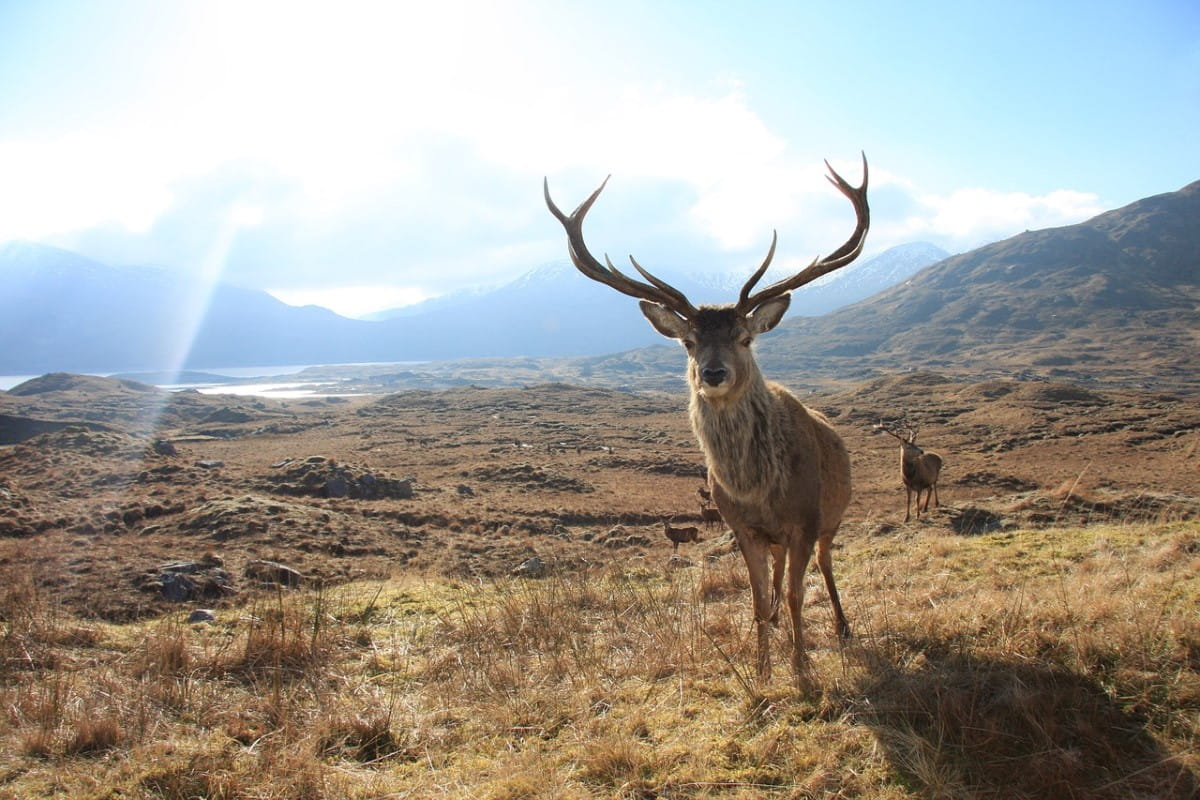
If you take anything away from this article remember that if you head anywhere that’s exposed to the wind there’s a much lower chance of getting bothered by the wee menaces compared to sheltered locations like a glen.
You’ll also hardly ever see them once you reach elevations of 1,500 feet or more so you might consider moving the mountain climbing/coast-walking sections of your Scotland itinerary higher up your list if you come here during midge season.
If you want to escape them completely, I advise you to head to Scotland’s east coast as they’re very rarely seen there, especially the southeast towards Edinburgh and down to the Scottish Borders. In fact, I can confirm this is indeed true because I live in East Lothian (the county east of Edinburgh) and I’ve never been bothered by midges, even when walking through the countryside at their favourite time of day.
If you want to find out more about visiting East Lothian (whether it’s to escape the midges or not), check out my Complete Guide to Places to Visit in East Lothian.
What Are the Worst Places for Midges in Scotland?
There are countless places where you’ll find midges in Scotland but they’re most prevalent around the western Highlands, the north and west coasts, and the Inner Hebrides. I’ve travelled a fair amount around Scotland so I’ll list a few places where (in my experience) you’re pretty much guaranteed to be plagued by them.
- Glen Brittle, Skye – you’ll find this glen west of the Fairy Pools.
- Sligachan, Skye – lots of moorland and water so ideal midge conditions.
- Torridon – anywhere around upper Loch Torridon and the Torridon Hills.
- Glencoe – the Bidean Nam Bian and Glen Etive areas are equally popular with midges and unwary tourists.
- North Mull – particularly around Calgary and Quinish.
- Isle of Rum – Lots of deer and boggy moorland make it a perfect midge habitat.
- The Trossachs National Park – the areas around Loch Katrine and Loch Lomond can be plagued with midges.
- Fort William – another bad midge area, especially for unsuspecting tourists on their way to Ben Nevis.
What Is the Best Time of Year to Avoid Midges in Scotland?
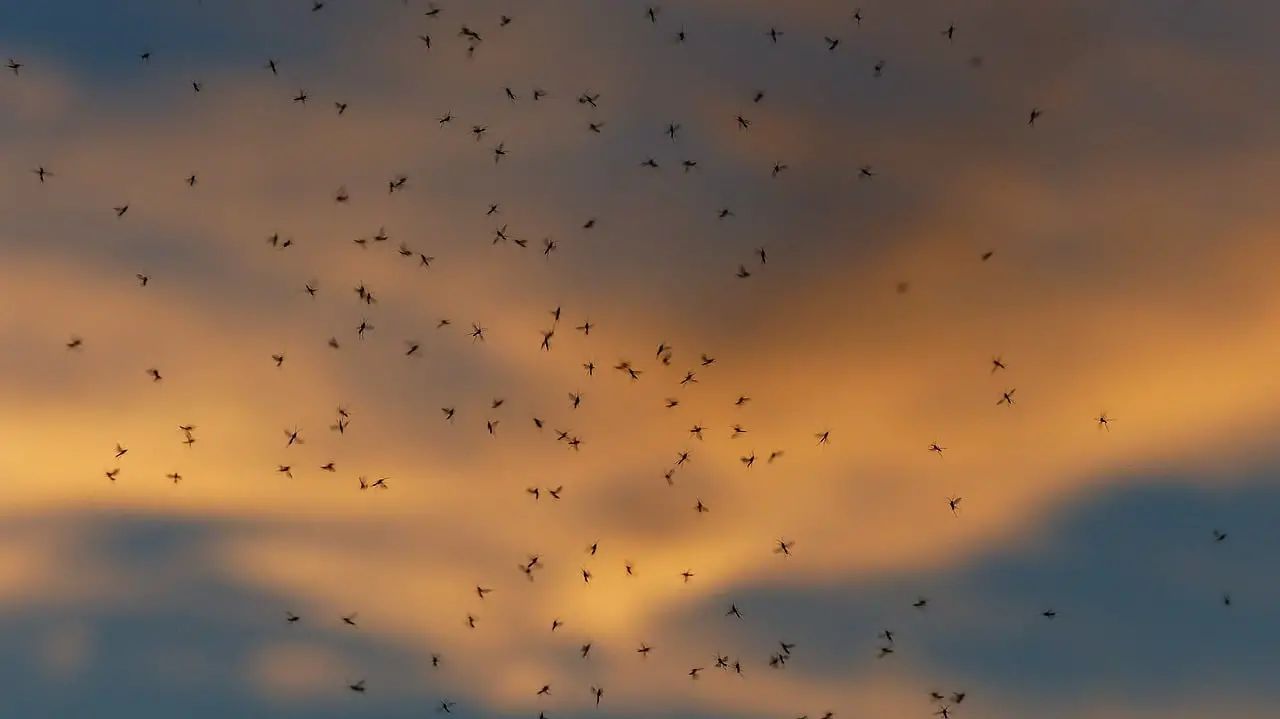
So when do Scotland’s midges come out? Quick answer: May to September. Long answer: It depends on the climate each year because unfavourable weather (for midges) will delay their emergence, but I’m afraid you’re guaranteed to find swarms of them in the height of summer no matter what the elements are doing.
If the weather is humid, the number of midges will still skyrocket, which is made even worse if Scotland has a wet summer (which it often does). In fact, it’s not uncommon for midges to torment visitors well into early autumn if the conditions are in their favour.
Key points to note:
- Cold and harsh winters can increase midge numbers due to the weather killing off their predators.
- Midge numbers will be higher than normal if the weather is humid and the air is still from March to June.
- A warm and damp spring means midge numbers will rocket later in the year.
- If it’s a warm summer, midges will be out in force well into early autumn due to the emergence of the third generation.
- Midges can appear as late as the end of September if it’s warm up to the end of August.
- Midges are most active early in the morning before dawn and late in the evening as the light fades.
Thankfully for those of us who live in Scotland, we can avoid midge season by exploring the countryside when they’re lying dormant, however, if you’re coming here between June and August for your holiday you’re just going to have to put up with them.
I really can’t stress enough how bad the midge swarms are in the Highlands, except to say it’s such a problem that it accounts for a major loss to the nation’s economy because outdoor workers find it almost impossible to get anything done when the midges are out in force. During midge season, the Scottish Forestry Authority estimates that 20% of working days are lost due to midge attacks, but this pales into insignificance when compared to the impact on tourism.
One estimation is that Scotland’s tourism industry loses around £270+ million each year due to people staying away. Yes, they really are that much of an irritation, but continue reading and I’ll show you how you needn’t be one of the unlucky ones who have their holiday ruined by these horrible biting insects.
Book Tours in Scotland
The Midge Lifecycle
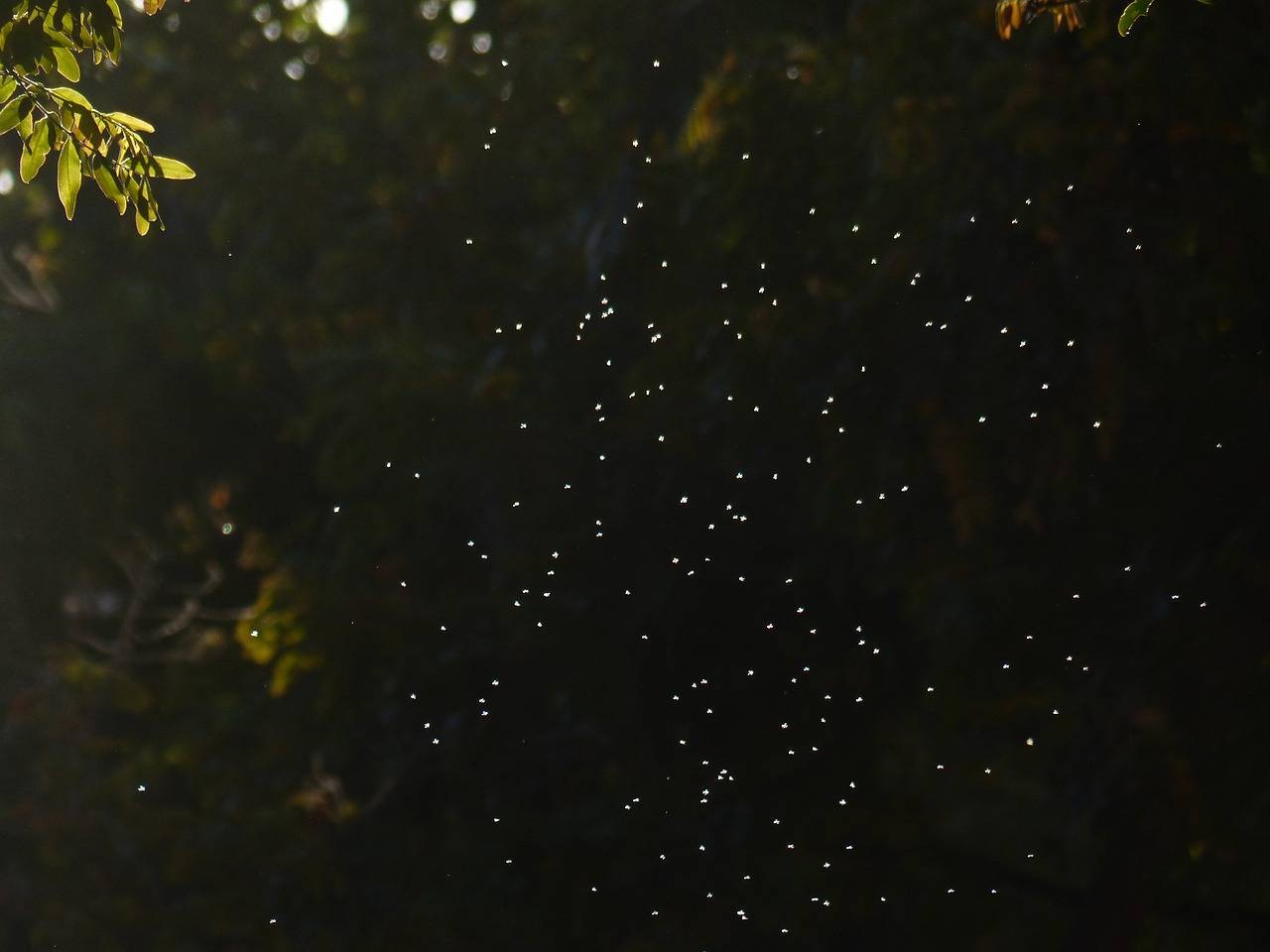
The Scottish midge follows a predictable breeding pattern where you’ll start to see them at the end of May and they start dying off in September – right in the middle of your summer holidays. Meanwhile, the females are laying more broods ready to annoy the sightseeing plans of the following year’s tourists.
When summer’s nearly over the eggs hatch and the larvae dig down into the soil a few centimetres for protection against the harsh winter climate. They then wriggle about in the soil looking for organic debris to eat which will keep them going until they’re ready to emerge again in May. As soon as May arrives the larvae pupate for 24 to 48 hours, after which the adult males emerge, followed shortly after by the females.
Depending on the weather, there will be a second or third generation roughly 6 weeks apart, and after the males have mated, they’ll die off, leaving the bitey females behind to lay their eggs across Scotland’s boggy, wet ground. That first batch is produced using the female midge’s own protein reserves, but if there are to be any more broods, she’ll need more protein, and that’s when they start hunting for sources of blood,i.e., you and me.
Thankfully the bite-a-thon declines once the temperature starts to fall so you’ll rarely be bothered by them once autumn comes along because the females die off from the cold. Unfortunately, their trillions of offspring are quietly waiting underground ready to emerge once the temperatures rise again, at which time the entire life cycle repeats.
Here’s a broken-down version of events.
- In mid-May, the male midges emerge from the topsoil layer after their long winter hiding from the cold.
- 7 days later the females appear, they find the males, mate, and the males disappear, never to be seen again. That’s basically a Saturday night out where I’m from.
- In another week the eggs mature and hatch into soil-dwelling larvae.
- The larvae go through 3 stages until they pupate into adult evil bloodsuckers.
- Females lay another 2 batches of eggs with around 200 eggs per brood depending on the weather conditions.
- The females die off in late September.
- The larvae from each generation bury themselves underground to hide from the winter and re-emerge the following May, ready to continue the life cycle.
The Scottish Weather and Midges

Certain weather conditions are favourable to Scotland’s midges, but as our weather is so unpredictable it’s almost impossible to guess how much of an impact the elements will have on them. If the weather is mild and damp then expect to get bitten, but if it’s hot and dry you can be relatively well assured their numbers will be low as they hate blazing sunshine.
Unfortunately, this is Scotland and blazing sunshine is about as rare as flying pigs or hen’s teeth, but at least you can avoid heading out into the Highlands when the weather’s in their favour.
Keep the following information in mind the next time you venture outdoors in Scotland:
Midges LOVE these weather conditions:
- No breeze, or at least any wind speed under 5 mph (8 km/h). Anything over that and the wee blighters struggle to take off.
- Dawn, dusk, and when there’s cloud cover. Midges don’t like it when it’s hot, so they’ll be more active when the sun is obscured by clouds (which happens a lot in Scotland).
- The amount of sun penetrating through the cloud cover is measured as W/m2 (Watts/metre squared). Midges will come out when the cloud cover is below 260 W/m2.
- Warm and damp weather in the Spring when the first generation of the year’s midges hatch.
- Warm and damp weather in early Autumn when the third generation of midges hatch.
Midges HATE these weather conditions.
- Windy days. Thankfully it’s generally windy in Scotland, especially in the higher regions. Midges can’t fly at all when the wind is above 7 mph (11 km/h).
- A cold and dry Spring means the hatching of the first generation of midges is delayed. Rejoice!
- Hot, sunny days. Direct, unobscured sunlight makes midges much less active which is why you’ll hardly ever see them on a sunny mid-afternoon.
- A dry and hot June and July will drastically reduce the number that survives in the second generation.
Protect Your Family From Scotland's Biting Midges
- Powerful, reliable protection for up to 8 hours
- Water- and sweat resistant
- Repels midges, mosquitoes, horse flies, sand flies, fleas and ticks
- Safe for use on adults, children over 30 months and pregnant women
- Non-sticky, moisturising with a pleasant fragrance
- Packaging may vary
The Scottish Midge Forecast
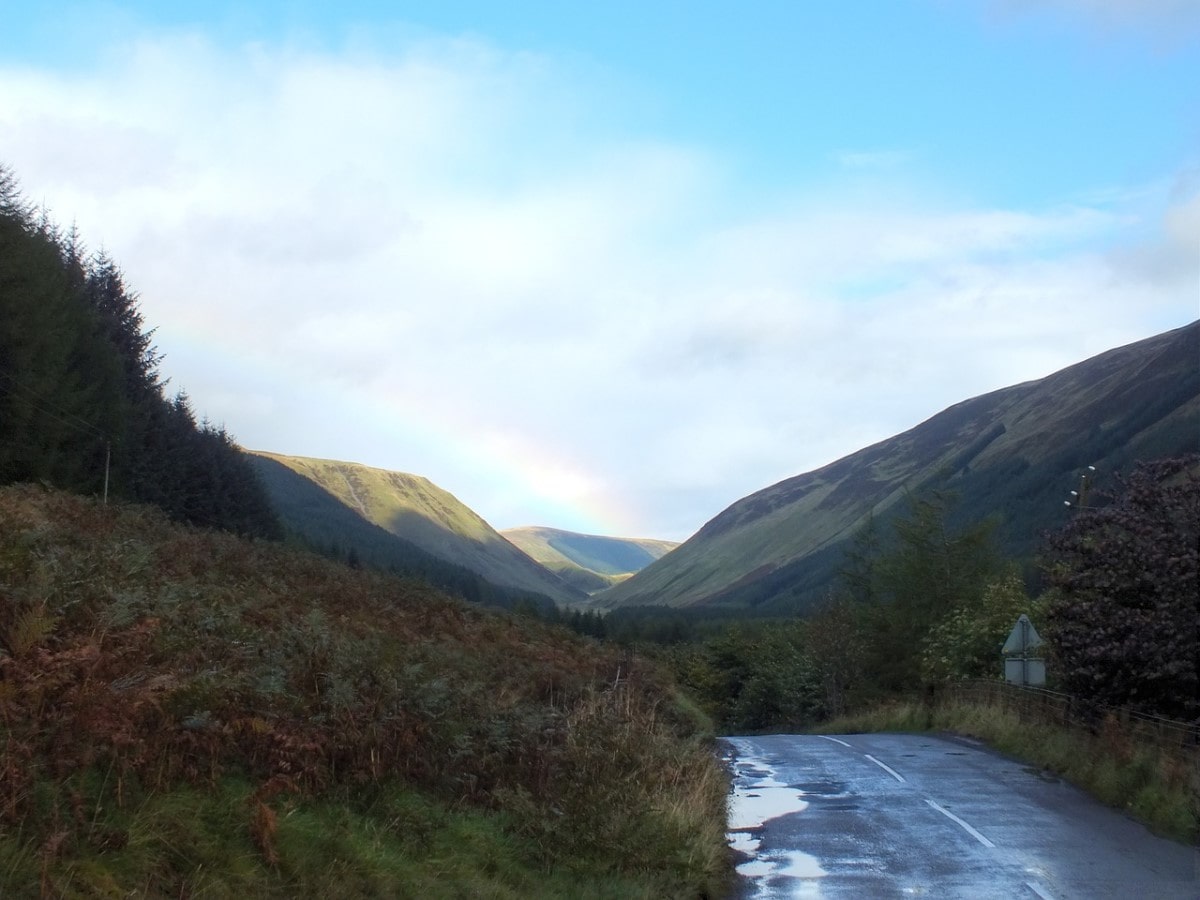
Aside from knowing when midge numbers will be at their peak and in which environments, there’s another tool you should use to steer clear of the worst-affected areas in Scotland. The company Smidge is at the front line of Highland midge defence, and their insect repellent is the number one go-to spray that’s used by locals to protect themselves.
What you might not know is that Smidge is also actively involved in researching the movements of insects, with the findings uploaded into their online Scotland Midge Forecast. This genuinely useful tool comprises a map of Scotland overlaid with coloured circles that are scored from 1 to 5.
Level one indicates midge numbers are almost zero; level two means an area is mostly midge free; level three means you’ll need to use midge protection to avoid them; level four means midge numbers are so high they’ll be a major nuisance; and level five means you should avoid the area entirely.
From personal experience, I’ve found the forecast to be pretty accurate, and level three is at the limit of my own level of tolerance, so I dread to think about how bad level five must be.
Smidge uses a combination of insect traps to record midge numbers allied with weather stations that monitor how windy and sunny it is, with the final verdict updated regularly throughout the season. I strongly suggest you take a look at the forecast before you head into the Highlands, and if the map shows a 4 or a 5 in the area you’re heading to, you might want to reconsider your plans.
What’s It Like to Get a Midge Bite?
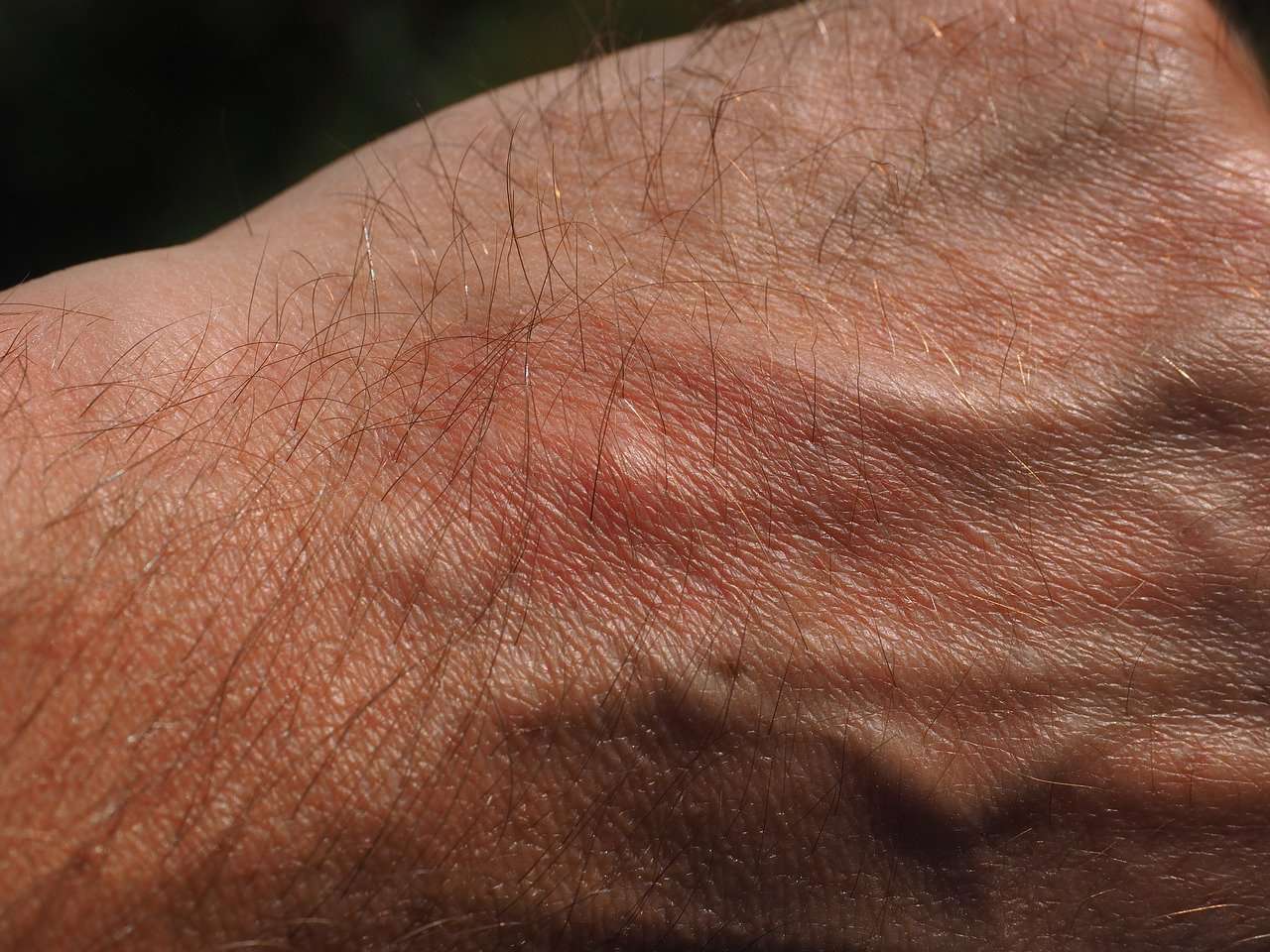
Painful then itchy. Question answered! As I mentioned earlier, it’s only the females that do the biting, as they need enough reserves of blood protein to make their eggs, but it’s the way they go about harvesting their juicy red meal that has given them such a fearsome reputation.
Midges feast primarily on mammals, most of which have a thick layer of skin protecting the gooey bits inside. To overcome this barrier, midges have developed toothed mandibles that work like saws to cut through the skin, and even though they’re only a millimetre or two in size as soon as they make the cut you’ll feel a sharp pinprick.
That’s compounded by the fact there are vast swarms of the flying monstrosities all over the Highlands, so while the odd bite here and there might be tolerable getting a hundred of them at a time is really quite painful.
Much like the mosquito, the Highland midge secretes a substance that stops your blood from coagulating, and it’s from the constantly oozing wound that the females feed – for up to 3 minutes at a time if left undisturbed, taking an average of 2 µl of blood. So that’s the painful bite out of the way, but what happens afterwards? Well, that’s the worst part, in my opinion, because now we have to put up with the maddeningly itchy red bump that’s left behind.
As soon as you get bitten your body will flood the area surrounding the wound with histamine in an attempt to flush out the intruder. That’s great, but a side effect of histamine is that it increases blood flow and boosts your white cell count, which then causes the red inflamed swelling we all know and hate.
Another side effect of histamine is that it sends signals to the nerves surrounding the bite which your brain perceives as an itchy sensation. We then scratch the itch to relieve it but this just increases the inflammation making it even itchier. It’s a vicious cycle – aarrgh!
Book Tours in Scotland
Scottish Midge Bite Treatments
So what can we do? Well, the first thing is to try to resist scratching. Yes, I know that’s hard but if you scratch the bite you might inadvertently break the skin leading to possible infection and a wound that takes much longer to heal.
If you’re not sure about insect bite treatments you should head to the NHS insect bites and stings page which has several suggestions, including applying over-the-counter antihistamine cream. I’m not going to tell you what I think the best treatment is but I’ve been using Anthisan for years and it’s always worked for me. You can get it from your local chemist or Amazon via the affiliate link below.
I’ve also heard from people who swear that applying heat from a hot water bottle helps with the itch, but then the NHS website says to apply a cold compress so I’d give the heat treatment a miss personally.
However, I can confirm that anything cooling, like calamine cream or tea tree oil, definitely helps to take away that infuriating urge to scratch, as does hydrocortisone cream. And on a side note, if you have hay fever you might like to make sure you regularly take antihistamine tablets which certainly seem to help with itchy bites.
As I’m not a medical practitioner, I won’t say which brand to use, but I tend to use Allacan, which you can get in a big 6-month supply for less than five rupees from Amazon. Other natural treatments I’ve heard of include applying honey to the affected area as well as aloe gel, but again, I’ve never used those treatments myself, and I’d always suggest going by the NHS guidelines instead.
- 6-Month Supply of Allacan Cetirizine Tablets: This pack contains 6 boxes, each with 30 tablets, offering a total of 180 tablets for long-term allergy relief.
- Effective Hayfever and Allergy Relief: Relieves common allergy symptoms like sneezing, runny nose, itchy eyes, and skin reactions caused by hayfever, dust, pets, and other allergens.
- Non-Drowsy Formula: Provides fast, effective allergy relief without causing drowsiness, so you can remain active and alert throughout the day.
- One Tablet Per Day: Convenient once-a-day dosage offers 24-hour relief, making it easy to stay comfortable.
- GSL Approved: Safe and reliable over-the-counter allergy medication.
Why Do Some People Get More Midge Bites Than Others?
If you’ve ever spent much time walking around the Highlands in the height of summer, you’ll almost certainly have come across someone who appears to be blissfully free of midge bites. While you have itchy lumps all over your body and are nearly insane from bites, these people seem to repel midges with a near-supernatural force, which is rather frustrating.
So why are we getting bitten and they’re not? Well, the answer appears to be related to their smell. Scientists have spent a long time trying to determine the cause of natural midge immunity and have observed everything from diet, being a smoker or not, body type, and even alcohol intake, but it now seems that it’s natural chemical odours that deter midge immunity in some people.
Studies are ongoing, but to date, it has been determined that the chemical ketone is what keeps the insects at bay. Whether the production of this chemical is hereditary or not is still to be confirmed, but it’s hoped the research will eventually allow the creation of a pill that will make anyone secrete midge-repelling ketone.
Until then, the rest of us without this chemical in our natural scent will have to get by covering ourselves in man-made lotions – which I’ll cover in the next section.
Protect Your Family From Scotland's Biting Midges
- Powerful, reliable protection for up to 8 hours
- Water- and sweat resistant
- Repels midges, mosquitoes, horse flies, sand flies, fleas and ticks
- Safe for use on adults, children over 30 months and pregnant women
- Non-sticky, moisturising with a pleasant fragrance
- Packaging may vary
How to Protect Yourself Against Midges
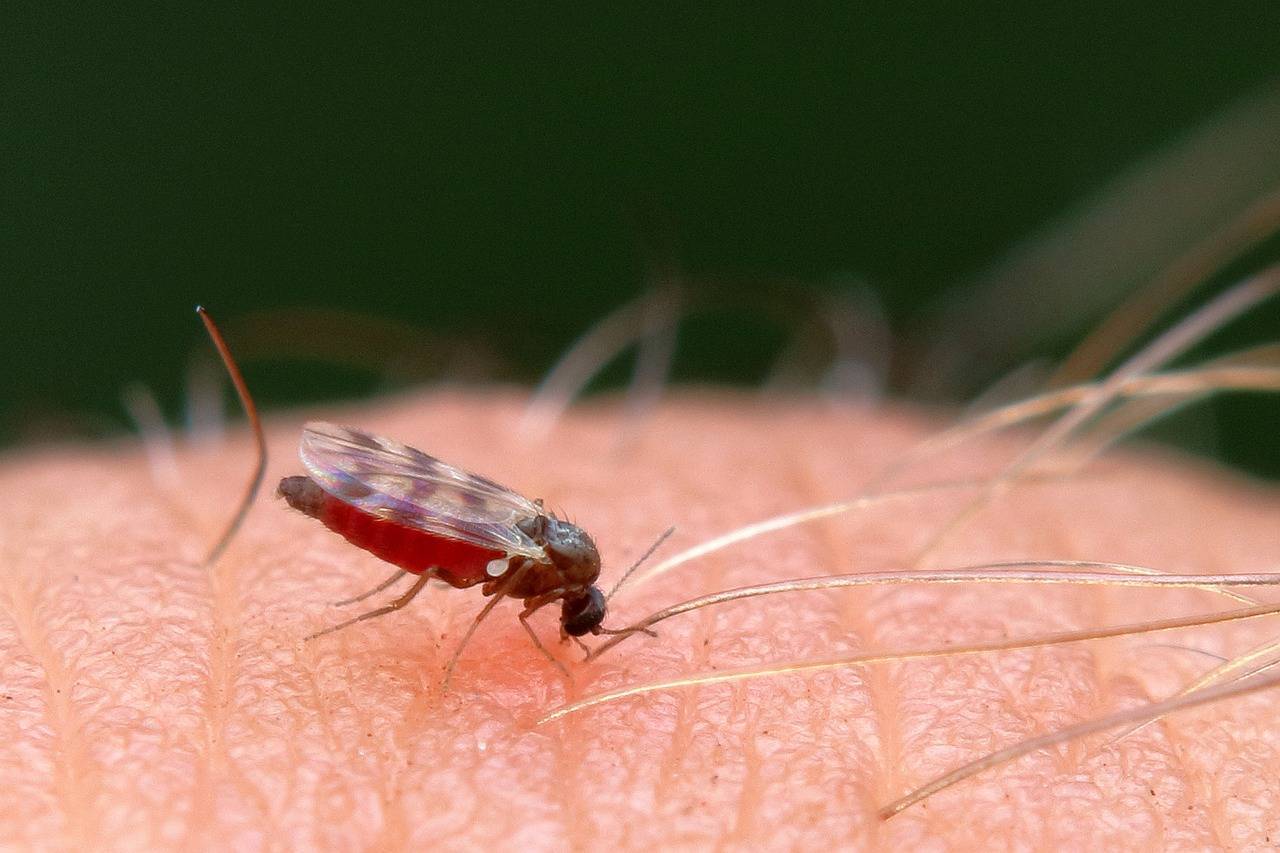
If I was feeling snippy I’d tell you to just avoid going outside, but that’s not really helpful when you’ve come to Scotland for a walking holiday, is it? What I’ll tell you instead is that because Scottish midges are such a constant problem we resourceful humans have invented lots of ways to deal with them, most of which involve wearing anti-midge clothing, but there are a couple of other gadgets you can use as well.
First off, if you’re choosing between staying in a tent or a hotel you might want to consider a hotel, even though it’ll be a lot more expensive. Midges hate air-conditioning and they’re reluctant to go inside buildings so a hotel will pretty much guarantee a good night’s sleep free from itchy, buzzy critters.
A tent, on the other hand, poses no problem for the little sh*ts and they’ll quite happily invade your personal space and possibly ruin your outdoor adventure while they’re at it. Whether you want to risk it is entirely up to you.
If you’re in a large group, you could consider investing in a midge trap. I’ve heard great things about these from people who’ve stayed at campsites where they’re installed, though they might not be the ideal solution if you’re backpacking.
A midge trap works by releasing carbon dioxide, heat, and moisture to mimic a blood-carrying mammal, so the biting insects that follow these markers are irresistibly drawn to it. Once the midges (or any other similar insect) are present, a powerful fan pulls them into a container, and a trap (typically a sticky pad) prevents them from escaping. Traps can protect an area up to 1 acre in size, but the big downside is that they can take a few days before they’re effective.
A far more practical alternative is a portable midge protector (Amazon Link), which covers 20 square metres, is powered by cheap butane canisters, and works almost immediately.
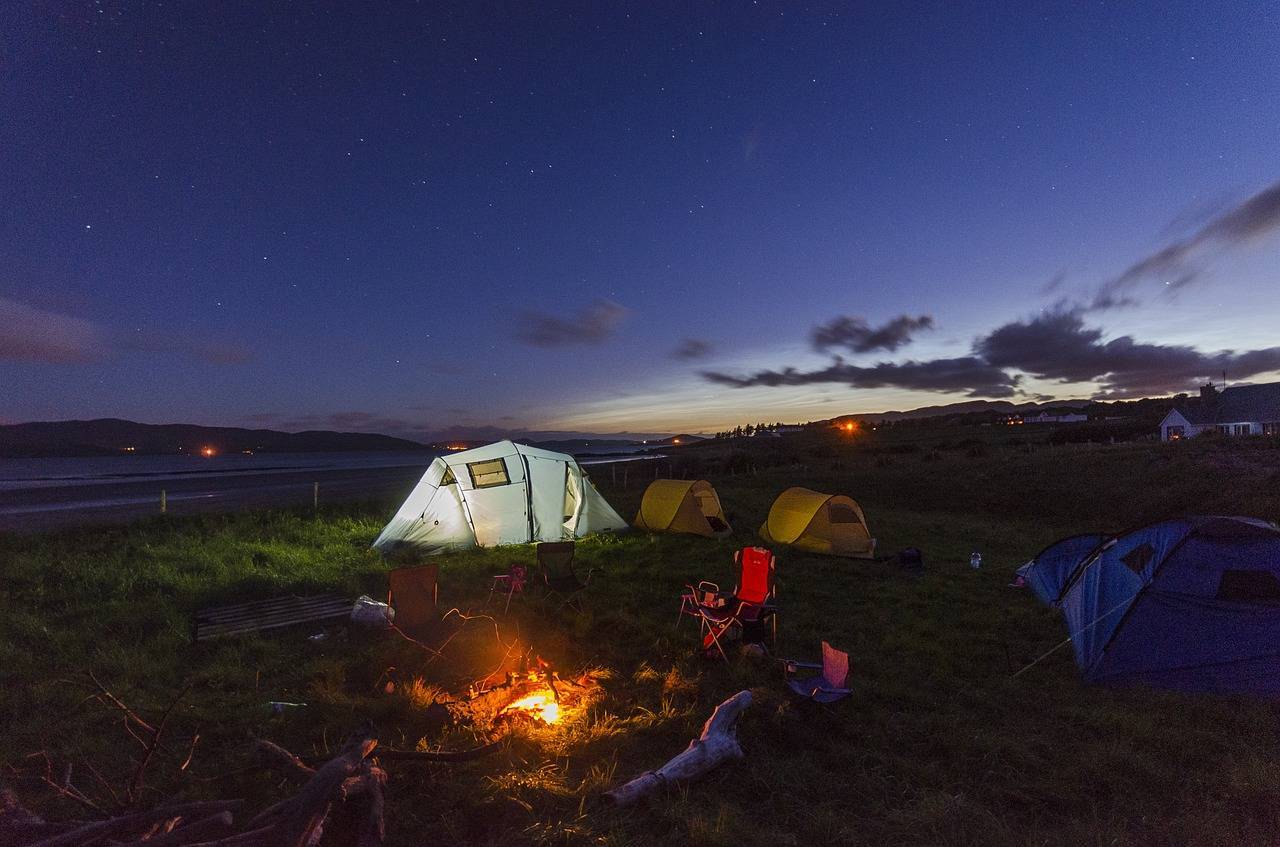
I 100% recommend the Thermacell midge/mosquito protector as they work amazingly well and they’re very cost-effective, especially if you find cheap butane canisters (Amazon link) on offer. If you’re in a tent, a caravan, or a motorhome and you’re planning to stay anywhere there could be midges, a midge protector will prove invaluable for your holiday.
Another gadget (ok, it’s not really a gadget) that flying insects hate is the midge candle. These produce a strong scent when lit and are a natural way to keep midges away, so I recommend you buy a few for your next Scottish holiday. They help with insect swarms, and they look nice too, and I think there’s something incredibly relaxing about watching a candle burn down in the evening.
On a similar note, you could try burning wood in a campfire, as the smoke will usually deter insects, but only if it’s directly in their flight path. Smoke is as useful as a chocolate teapot if the wind blows in the wrong direction.
So what else can you do to protect yourself? I think the easiest option is two-fold. Step one is to cover yourself from head to toe so no exposed part of your skin is visible, and step two is to use a good insect repellent to make your body appear as unappetizing as a week-old kebab.
For the clothes, I can only recommend what I use myself, and that’s wearing convertible lightweight hiking trousers to protect my legs and a thin base layer shirt to protect my top half.
One thing I’ll mention about convertible trousers, having worn them for years, is that you really do get what you pay for. Every cheap pair I’ve ever had has fallen to bits within a year, whereas my expensive North Face trousers are still going strong almost two years later.
The trousers are great as they’re breathable so you don’t get too hot, and you can zip the legs off to convert them into shorts once the midges have died down later in the day. The tops, meanwhile, are thin enough to keep cool but cover everything apart from the hands and neck, and the arms can be rolled away when it gets too hot.
I’ve never worn a mosquito hat but I know people who do and fair enough if you don’t want to scrape thousands of insects out of your hair, nose, and ears each night. There are loads on Amazon but this one comes recommended to me by a friend who’s got one.
- COMPACT AND LIGHTWEIGHT: A compact, lightweight pop-up mosquito and midge head net hat made with fine black mesh with 1001 holes per square inch. Supplied with it's own compact bag with drawstring closure, for easy portability
- FULL ENCLOSURE TO HEAD AND NECK: Will protect the head, face and neck from annoying flying insects when outdoors
- SAFE AND SECURE: Includes a toggled draw cord, to ensure maximum protection and to keep all flying insects away from the face
- IDEAL for use in areas with a high population of small and biting insects, for example in beekeeping, fishing, jungle exploration, hiking, tropical travel and other outdoor activities
- STRONG AND RELIABLE: manufactured from tough, multi-filament polyester
Midge Repellents
Phase 2 of the ‘Out About Scotland anti-midge protection plan®’ is to use a quality insect repellent spray, and I’ve used quite a few in my time so I’ve got some good suggestions for you.
Insect repellents come in two forms – those that contain DEET, and those that don’t. Non-DEET repellents usually comprise of three main active ingredients: IR3535 (ethyl butyl-acetylaminopropionate), saltidin, and citriodiol, all of which are natural products and are reputed to be gentler on the skin and less prone to causing reactions.
The downside is they generally offer a shorter duration of protection and tend to be slightly less effective than products that use DEET. In addition, some of these natural compounds have a strong scent which some users may find sickly. DEET, on the other hand, is a chemical formula that blocks the insect’s senses so that the smells (sweat, breath) we produce don’t attract them.
DEET comes in different strengths – 25% (the standard), 50%, and 100%. It may be tempting to go for the strongest version, but before making a purchase you might like to know that there are some concerns about DEET being carcinogenic in very high concentrations.
Also, there is research suggesting that increasing the strength from 50% to 100% does not significantly improve performance, and while high-content DEET works extremely well as a midge repellent, it’s known to irritate the skin of some people.
| DEET Facts |
|---|
| DEET does not kill insects, but it does repel them. |
| Deet offers long-lasting protection against a number of different insects. |
| Children can use DEET if the manufacturer’s guidelines are followed. |
| DEET has been around since the 1950s. It was initially developed by the US Army after WWII. |
| DEET is not the same as DDT. DDT is a banned chemical. |
| The level of DEET in a repellent refers to how long the protection will last. 7% DEET usually protects for up to 2 hours. 25% DEET can last up to 5 hours. |
As far as brands are concerned, I’ve personally used Jungle Formula both overseas and in the Highlands, and it worked every time, but it’s quite strong, so it’s probably overkill for most visitors to Scotland.
An alternative that’s even better than using DEET is Smidge which offers up to 8 hours of protection without using any nasty chemicals, making it a good option for pregnant women and children. Instead, it contains 20% picaridin (AKA saltidin), which has been tested to be equally safe on adult and children’s skin and is nontoxic to birds and animals.
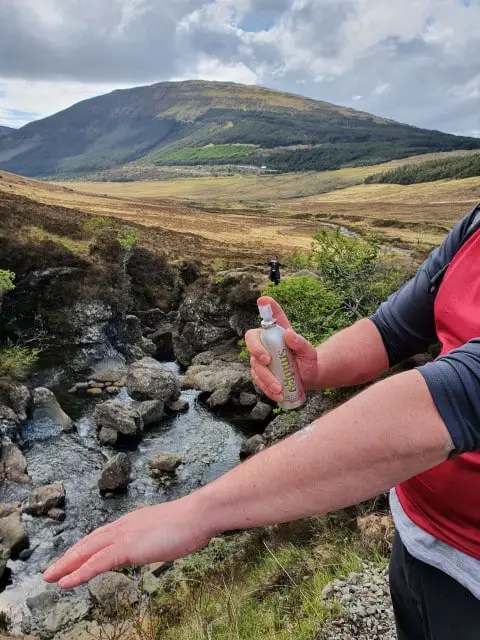
I’ve only got great things to say about this stuff and I love the fact it actually moisturizes the skin at the same time as offering protection, and it smells nice too. If I had to pick between the two I’d say go with Smidge, but if you can’t find a stockist or you don’t like shopping on Amazon just get any generic DEET spray instead.
There’s one other product I want to mention that I always thought was an old wives tale until I went for a walk on the Isle of Arran. I had foolishly left my can of Smidge in the caravan and the midges were in a biting frenzy on the island, but luckily my other half had a bottle of Avon Skin So Soft with her.
I was sceptical that the lotion would do anything, but lo and behold, it did! Midges seemed to be repelled just as much as when I use a dedicated insect spray, plus it smells quite nice and doesn’t leave skin feeling oily. The moisturising lotion appears to deter midges for around 3–4 hours, so it’s not as long-lasting as dedicated repellents, but it’s not exactly a hardship to reapply it either.
If it’s any recommendation, a bottle of Avon Skin So Soft is now a permanent fixture in my travel bag.
Final suggestions for midge repellents are definitely in the old wives’ tale camp, but I’ve heard more than a few people mention these tips during my travels in the Highlands so there might be something in it.
First, eat Marmite. Yes, I know it’s either a love or a hate thing going on with this sandwich spread but by all accounts, it’s the high content of vitamin B in it that acts as a deterrent. I guess you could also take vitamin B tablets and it would have the same effect, but I’ve only been told about Marmite.
Second, if you can find a bog myrtle plant, tie some to your hat because midges hate it. I know that sounds uber-weird but it’s a fact that bog myrtle is an active ingredient in some midge repellents so it might be worth considering, at least while no one can see you wandering about with a plant on your head.
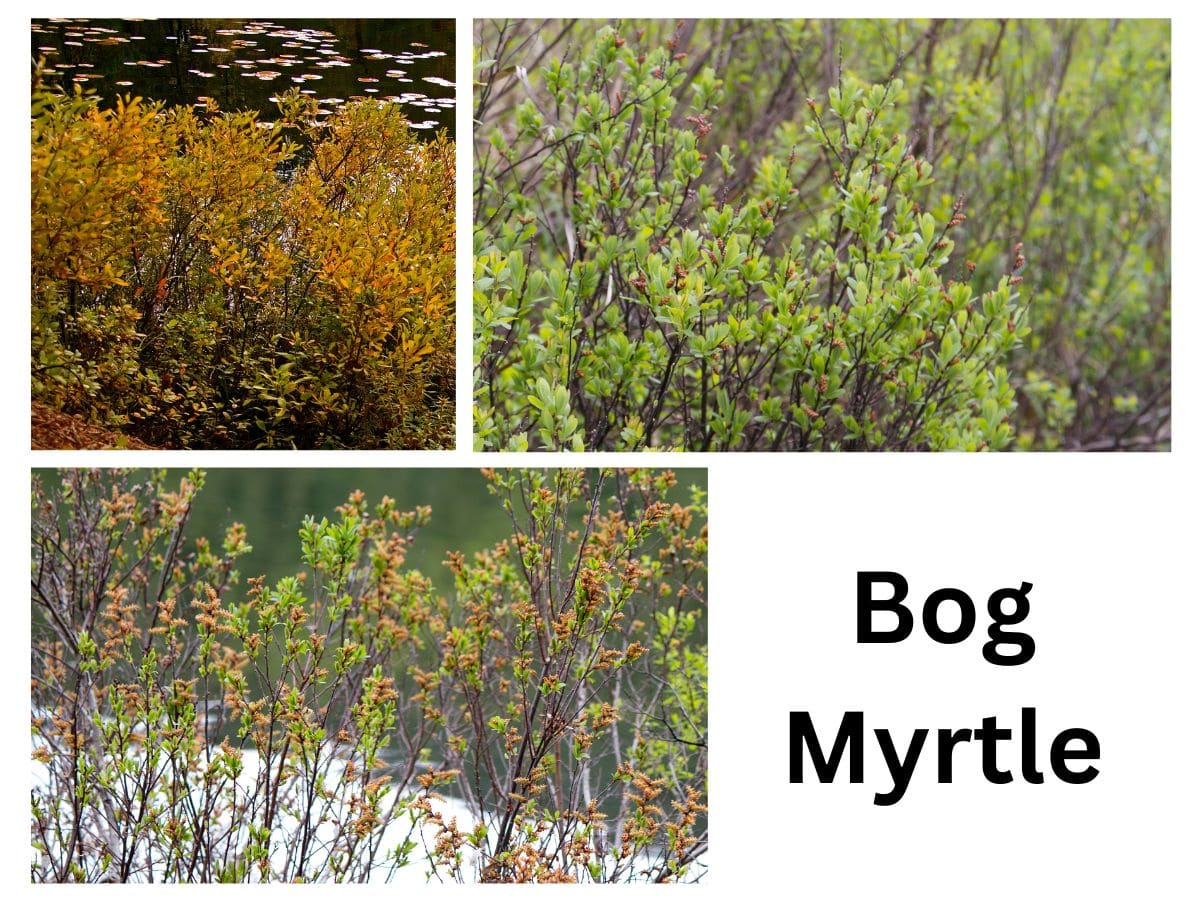
Book Tours in Scotland
Eradicating Midges for Good
The midge problem and its effect on the Scottish tourism industry have led to calls to have them completely eradicated from certain areas, and even from the entire country. It’s a nice thought, but aside from the difficulty in removing them from the ecosystem, there are unknown side effects that could wreak havoc on the food chain.
Midges, as small and annoying as they are, are a major food source for many animals, including bats like the pipistrelle and birds like the warbler, and removing midges from their diet could harm their populations. Some scientists have suggested introducing new predators to reduce rather than destroy midge numbers, but again, this could hurt other animal species.
On the flip side of the coin, some scientists suggest that eradicating midges in Scotland will have a minimal effect on the animals that feed on them as these predators will simply find something else to eat, though a reduction in the ‘something else’ could lead to further unwanted changes in the ecosystem.
It’s a complex business to be sure, but one thing that could lead to the government giving the thumbs up to a large-scale midge eradication programme is climate change. It’s a known fact that as winters become ever milder and shorter, midge numbers are increasing dramatically, and with it comes the possibility of midges carrying fatal diseases.
Currently, midges have no disease that can kill humans, but they do carry viruses that can be fatal to cattle, such as the blue tongue virus. It’s generally accepted that any change in the climate and its impact on midges is unlikely to become a major issue in our lifetime, but future generations may be forced to find some way of exterminating them for good.
What Other Biting Insects Live in Scotland?
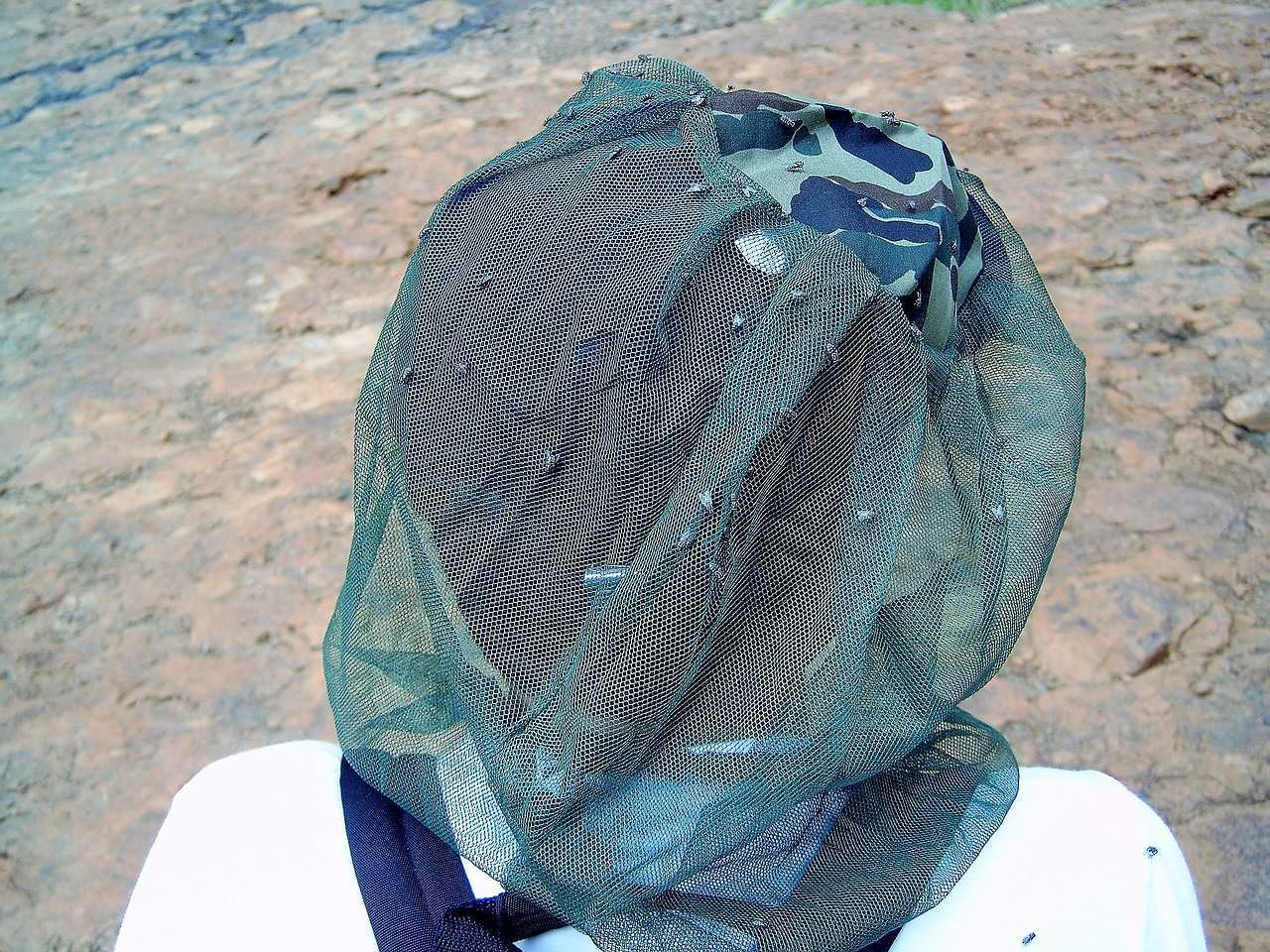
We’re pretty lucky in Scotland because other than the odd angry seagull we don’t have too many critters that can cause us harm, though there are a couple of other insect species that can be pretty annoying.
In towns and cities, you can expect to see wasps wherever there are people and discarded food lying about, but I don’t see wasps as a problem. Yes, their sting hurts, but seriously, what do people expect when they instantly start flapping their arms around as soon as a wasp comes nearby?
My experience shows that a gentle hand movement deters all but the most determined wasps so there’s no need to be a giant baby and start screaming and flapping about whenever a tiny 1 cm insect comes into view. Besides, they’re only attracted to the food people can’t be bothered to dispose of properly, so if the litter is cut down the wasps will be less of a problem.
And before anyone says they serve no purpose, remember they eat garden-destroying aphids and other pests, so I reckon we should be grateful there are wasps in the world. That being said, if you’re intent on deterring them you could do a lot worse than using Wasp-ex. It’s made from natural oils like basil oil and it doesn’t harm the environment like some of the other wasp repellents out there.
- WASP REPELLENT SPRAY: Our natural wasp repellent spray is a great alternative to a wasp nest killer, working as an effective wasp deterrent outdoor and garden wasp repellent to deter wasps from your home, garage, garden and vehicles in mere days. This wasp deterrents that work helps protect your home from both bees and wasps. Try our insect spray for home now! We advise to spray daily to function as a preventative measure.
- LEMONGRASS AND CLOVE LEAF ESSENTIAL OILS: Our wasp nest spray is made with a special composition, an alternative to wasp killer outdoor and wasp powder applicator, ensuring no more wasps in your home straight away and also ensuring long-term protection from any wasps nest.
- WASP SPRAY FOAM ALTERNATIVE: Looking for how to get rid of wasp nests? Our spray to get rid of wasp nest is the answer! Our garden wasp repellent is a perfect outdoor wasp deterrent alternative to nest wasp killer. Instead it repels bees and wasps organically with its natural ingredients, protecting your home environment from unwanted insects!
- EASY TO USE: For best results spray 2-3 times daily in the target area. Spray on all spaces such as windows, garden furniture, porches and BBQ areas. This product leaves no staining and unwanted residue and has a safety on/off spray cap
- MADE IN GERMANY - All our products are manufactured, tested and packaged in the heart of Hamburg, Germany. We use only premium quality ingredients and constantly improve our formulas to create the highest quality products that are entirely cruelty-free.
So what else is there? Since bees have no desire to harm humans unless the aforementioned adult babies annoy them, I do not consider them to be a pest. Also, because populations of the world’s top pollinators are drastically declining, we must actively encourage them.
One Scottish insect you might need to be wary of, though, is the cleg, otherwise known as the horsefly. You’ll find these relatively large flies in the northern Highlands between June and September, and they have a notoriously vicious bite. This is really quite painful and always seems to result in a red, inflamed lump that’s much worse than you’ll ever get from a midge.
Luckily, horseflies don’t congregate in large numbers and they’re not particularly common in most areas, but take care if they’re about. The normal reaction to a bite is a large, itchy red weal that lasts for days, and sometimes weeks.
Another pest we have in Scotland is the black fly which is much smaller than a Cleg but larger than a midge, and also packs a powerful bite. While not dangerous they are very unpleasant, and like midges they prefer to swarm in large numbers, though thankfully only in localized areas like woodlands and lochs.
Their bite is much worse than a mosquito and the raised sore they leave behind is unbelievably itchy so I advise you to stay away from their hotspots of Speyside and Aviemore in May when they’re most prevalent.
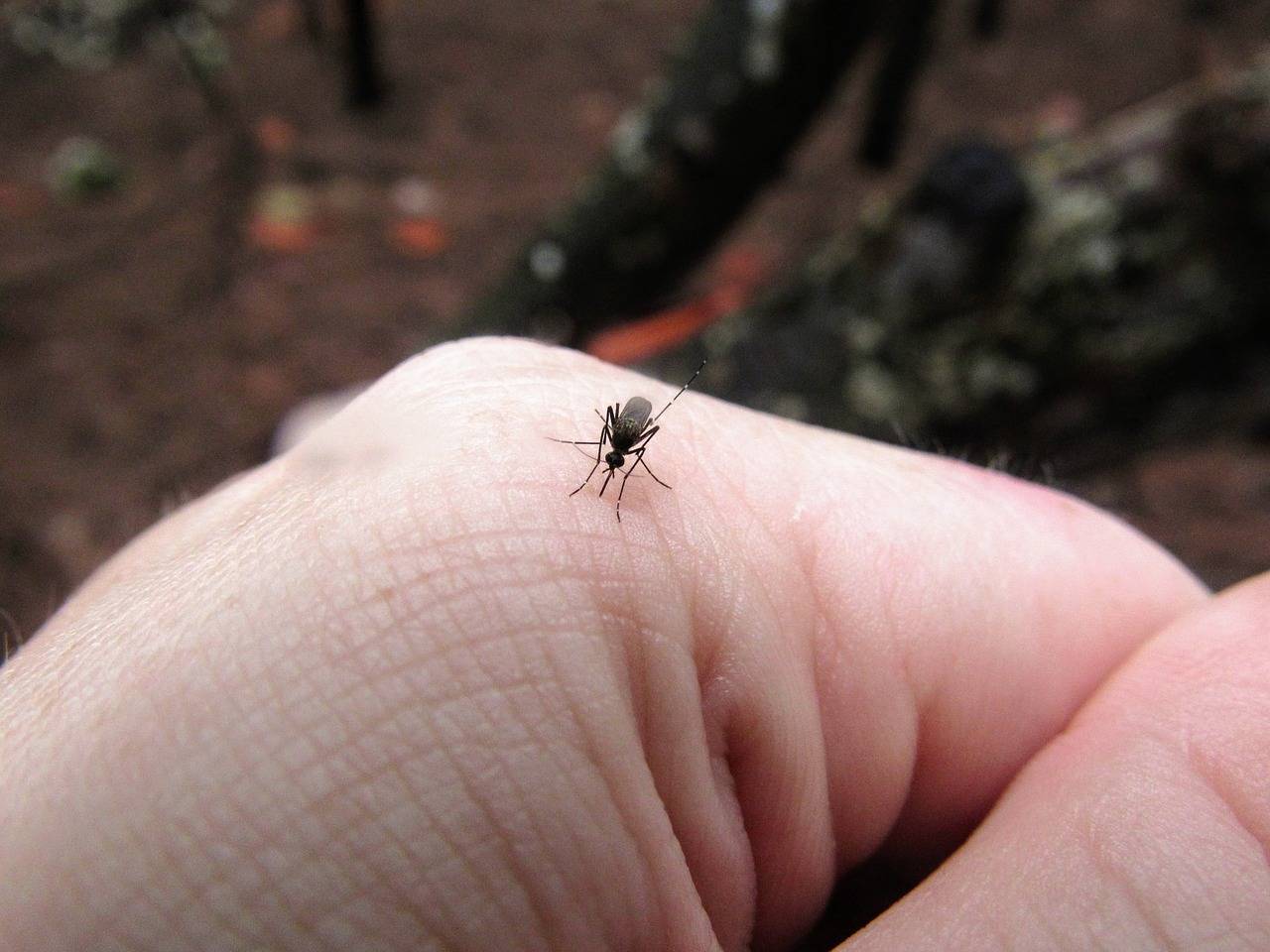
Another nasty critter you need to be aware of in Scotland is the tick which is a tiny insect that looks a bit like a micro-sized spider. They feed on blood and will embed their mouth parts into the skin which makes them difficult to remove without leaving the head behind. Ugh!
Dogs, in particular, are very prone to getting tick bites but humans can suffer from them too which can be a real problem as ticks can – but not always – carry Lyme disease. Ticks are a whole problem in themselves so I’ve created a separate guide about them which you can read here.
Protect Your Family From Scotland's Biting Midges
- Powerful, reliable protection for up to 8 hours
- Water- and sweat resistant
- Repels midges, mosquitoes, horse flies, sand flies, fleas and ticks
- Safe for use on adults, children over 30 months and pregnant women
- Non-sticky, moisturising with a pleasant fragrance
- Packaging may vary
Resources About Scottish Midges
NHS insect bites page: https://www.nhs.uk/conditions/insect-bites-and-stings/
Smidge website: https://www.smidgeup.com/
How I Get Rid Of… website: https://howigetridof.com/midge-repellent/
Frequently Asked Questions
What are midges?
Midges are part of the Ceratopogonidae family of biting flies that exist on every continent on earth except for those places that are either too cold (like the north and south poles) or too hot (like the permanent deserts of North Africa).
How many midges are there in Scotland?
Several studies have estimated that for every 2 square metres of ground there will be half a million eggs, so across the known areas where Scotland’s midges have been found there could be up to 181 Trillion of them.
Where do midges live in Scotland?
The greatest numbers of midges are to be found in the West Highlands. They tend to live close to their food source, cattle, below 1,500 feet. The east coast of Scotland is relatively free of midges.
When is the midge season in Scotland?
May to September, though it can vary because extended cold periods delay their emergence.
What keeps midges away?
There are a few things you can do to help keep midges away. One way is to use insect repellents that contain DEET. This chemical is effective at deterring midges and other biting insects.
You can also use citronella candles to help keep midges away while sitting outdoors. Another option is to make sure that any nearby standing water is drained as midges often lay their eggs in standing water.
Which parts of Scotland are worst for midges?
Midges are most active in areas with moist and boggy ground such as moorlands, marshes, and wetlands. They are also attracted to wooded areas and dense vegetation.
In general, the western and northern parts of Scotland tend to have the highest populations of midges, with the Scottish Highlands being particularly notorious.
How long do midges live indoors?
Midges can live indoors for varying lengths of time depending on several factors. The lifespan of midges typically ranges from two to seven weeks outdoors.
Indoors, midges will typically live for the same amount of time, but keeping your indoor environment dry can help to reduce their lifespan.
Are midges the same as mosquitos?
No, midges and mosquitoes are not the same. Midges are small flies that do not have a proboscis (the mouth part that transmits diseases), while mosquitoes are insects that can bite and transmit diseases like malaria, dengue fever, and Zika virus.















